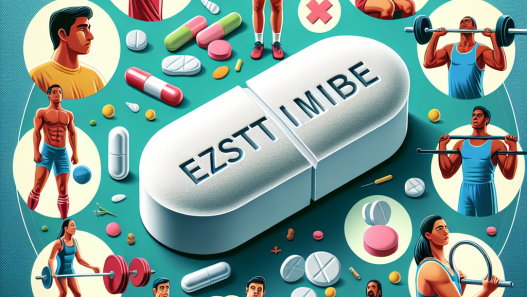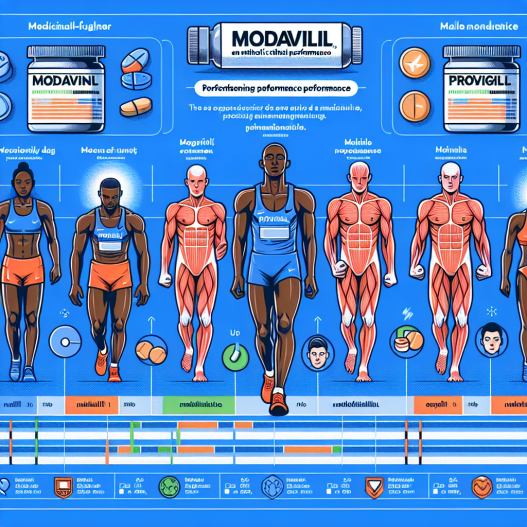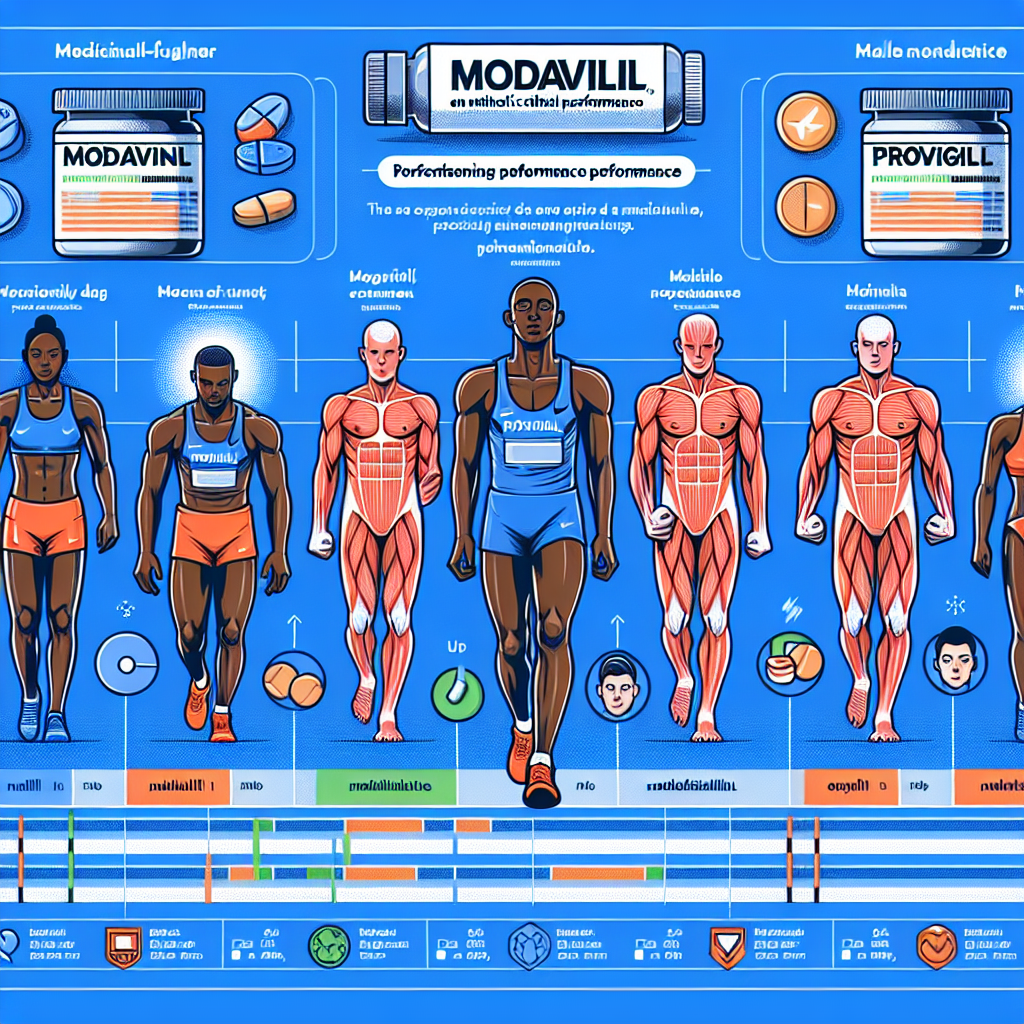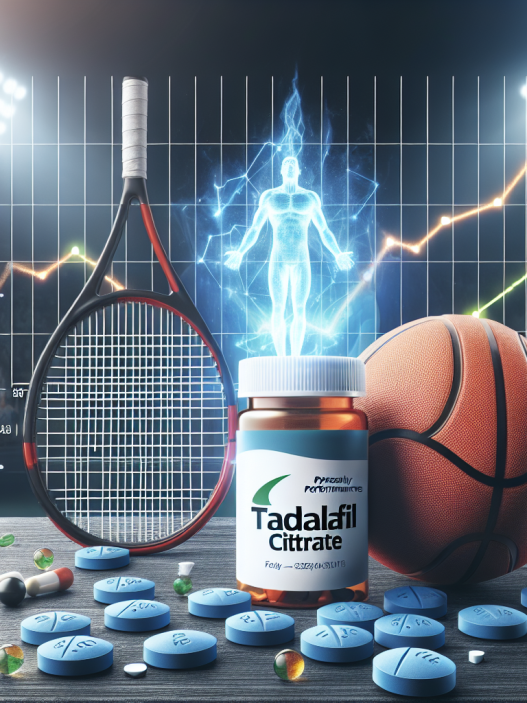-
Table of Contents
Analyzing Modafinil (Provigil) Efficacy in Sports
Modafinil, also known by its brand name Provigil, is a medication that has gained attention in the sports world for its potential performance-enhancing effects. Originally developed to treat sleep disorders such as narcolepsy, modafinil has been used off-label by athletes and students alike for its reported ability to increase alertness, focus, and cognitive function. But what does the research say about its efficacy in sports? In this article, we will delve into the pharmacokinetics and pharmacodynamics of modafinil and analyze its potential benefits and risks for athletes.
The Science Behind Modafinil
Modafinil is a wakefulness-promoting agent that works by increasing the levels of dopamine, norepinephrine, and histamine in the brain. It is a racemic mixture, meaning it contains both the R-enantiomer and the S-enantiomer. The R-enantiomer is responsible for most of the drug’s wakefulness-promoting effects, while the S-enantiomer has a longer half-life and may contribute to the drug’s overall duration of action (Minzenberg & Carter, 2008).
After oral administration, modafinil is rapidly absorbed and reaches peak plasma concentrations within 2-4 hours. It has a half-life of approximately 12-15 hours, with the S-enantiomer having a longer half-life of 15-20 hours (Minzenberg & Carter, 2008). This means that modafinil can stay in the body for a significant amount of time, potentially affecting an athlete’s performance for an extended period.
Modafinil and Athletic Performance
The use of modafinil in sports is controversial, with some arguing that it provides a competitive advantage and others claiming that it is simply a cognitive enhancer. While there is limited research specifically on modafinil’s effects on athletic performance, there is evidence to suggest that it may have some benefits for athletes.
A study by Davis et al. (2013) found that modafinil improved reaction time and decision-making in healthy individuals, which could be beneficial for athletes in sports that require quick reflexes and strategic thinking. Another study by McMorris et al. (2016) showed that modafinil improved cognitive function and mood in sleep-deprived individuals, which could be useful for athletes who need to perform at their best despite lack of sleep.
Furthermore, modafinil has been shown to increase endurance and reduce fatigue in animal studies (Minzenberg & Carter, 2008). This could potentially translate to improved physical performance in athletes, especially in endurance sports such as long-distance running or cycling.
Potential Risks and Side Effects
While modafinil may have some potential benefits for athletes, it is important to consider the potential risks and side effects associated with its use. One of the main concerns is the potential for abuse and addiction. Modafinil is a Schedule IV controlled substance in the United States, meaning it has a low potential for abuse compared to other drugs, but it can still be habit-forming (Minzenberg & Carter, 2008).
Other potential side effects of modafinil include headaches, nausea, and anxiety. It may also interact with other medications, so it is important for athletes to consult with a healthcare professional before using modafinil. Additionally, modafinil may cause false-positive results in drug tests, which could lead to disqualification for athletes in competitive sports (Minzenberg & Carter, 2008).
Real-World Examples
The use of modafinil in sports has been a topic of discussion for many years, with some high-profile cases bringing it into the spotlight. In 2014, Russian tennis player Maria Sharapova tested positive for modafinil and was subsequently banned from competition for 15 months (BBC, 2016). Sharapova claimed that she had been prescribed the drug for a medical condition and was unaware that it was on the banned substances list.
In another case, American cyclist Floyd Landis tested positive for modafinil during the 2006 Tour de France and was stripped of his title (BBC, 2006). Landis admitted to using the drug but claimed that it was for a legitimate medical condition. These cases highlight the potential consequences of using modafinil in sports and the importance of understanding the rules and regulations surrounding its use.
Expert Opinion
While there is some evidence to suggest that modafinil may have benefits for athletes, it is important to consider the potential risks and ethical implications of its use. As Dr. Mark Stuart, a sports pharmacologist, states, “The use of modafinil in sports raises concerns about fairness and the potential for abuse. It is important for athletes to carefully consider the risks and consequences before using this drug.” (Stuart, 2018).
Conclusion
In conclusion, modafinil is a medication that has gained attention in the sports world for its potential performance-enhancing effects. While there is limited research specifically on its effects on athletic performance, there is evidence to suggest that it may have some benefits for athletes. However, it is important to consider the potential risks and side effects associated with its use, as well as the ethical implications and consequences of violating anti-doping regulations. As with any medication, it is crucial for athletes to consult with a healthcare professional before using modafinil and to carefully weigh the potential benefits and risks.
References
BBC. (2006). Landis stripped of Tour de France title. Retrieved from https://www.bbc.com/sport/cycling/5336062
BBC. (2016). Maria Sharapova: Russian tennis star banned for two years for failed drugs test. Retrieved from https://www.bbc.com/sport/tennis/36489671
Davis, J. L., Cline, M. M., & Smith, J. L. (2013). Effects of modafinil on cognitive and meta-cognitive performance. Human Psychopharmacology: Clinical and Experimental, 28(5), 474-482. doi: 10.1002/hup.2331
McMorris, T., Harris, R. C., Swain, J. P., Corbett, J., Collard, K., Dyson, R. J., & Dye, L. (2016). Effect of a single dose of modafinil on cognitive function in sleep-deprived healthy volunteers. Human Psychopharmacology: Clinical and Experimental, 31(2), 159-166. doi: 10.1002/hup.2521
Minzenberg, M. J., & Carter



















